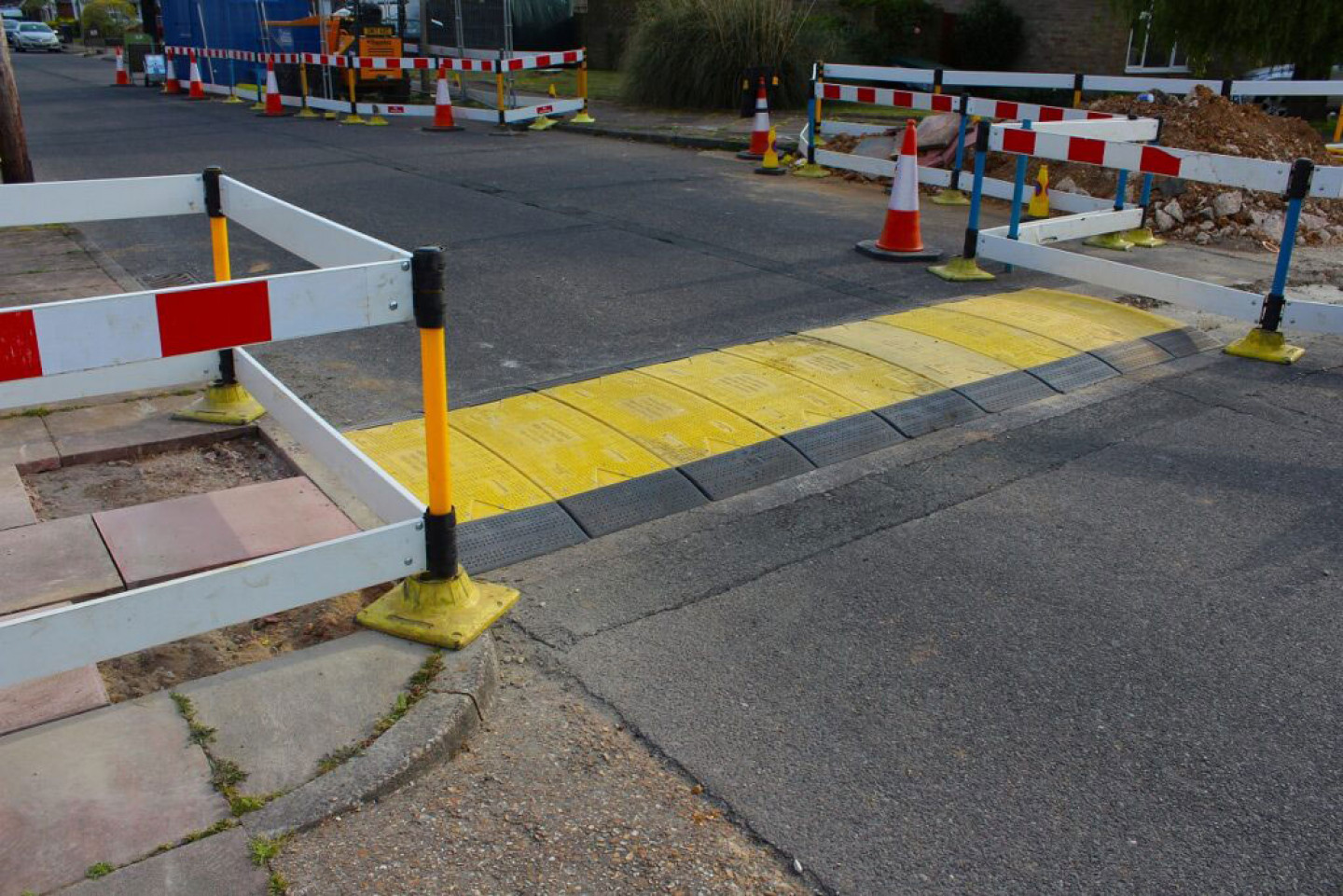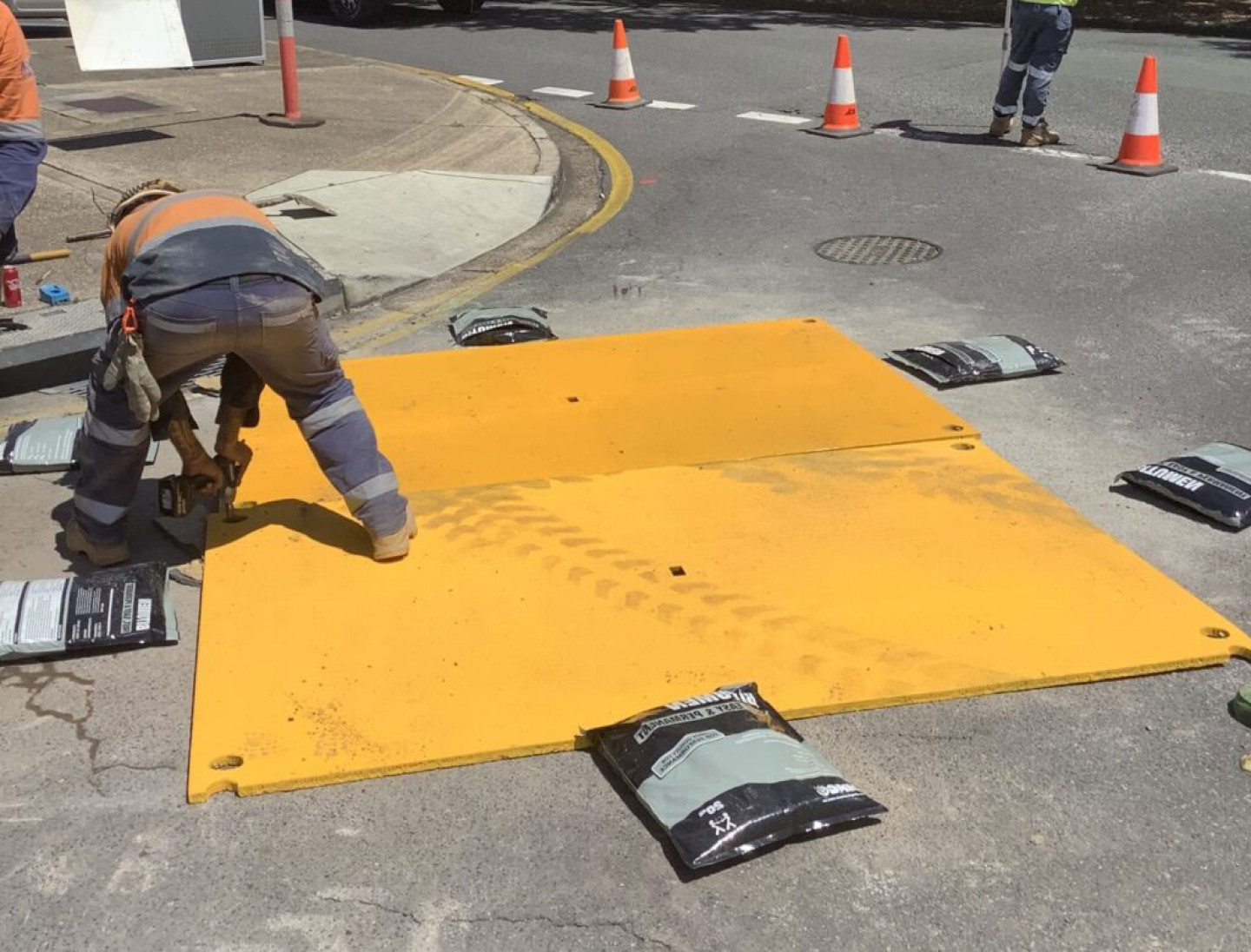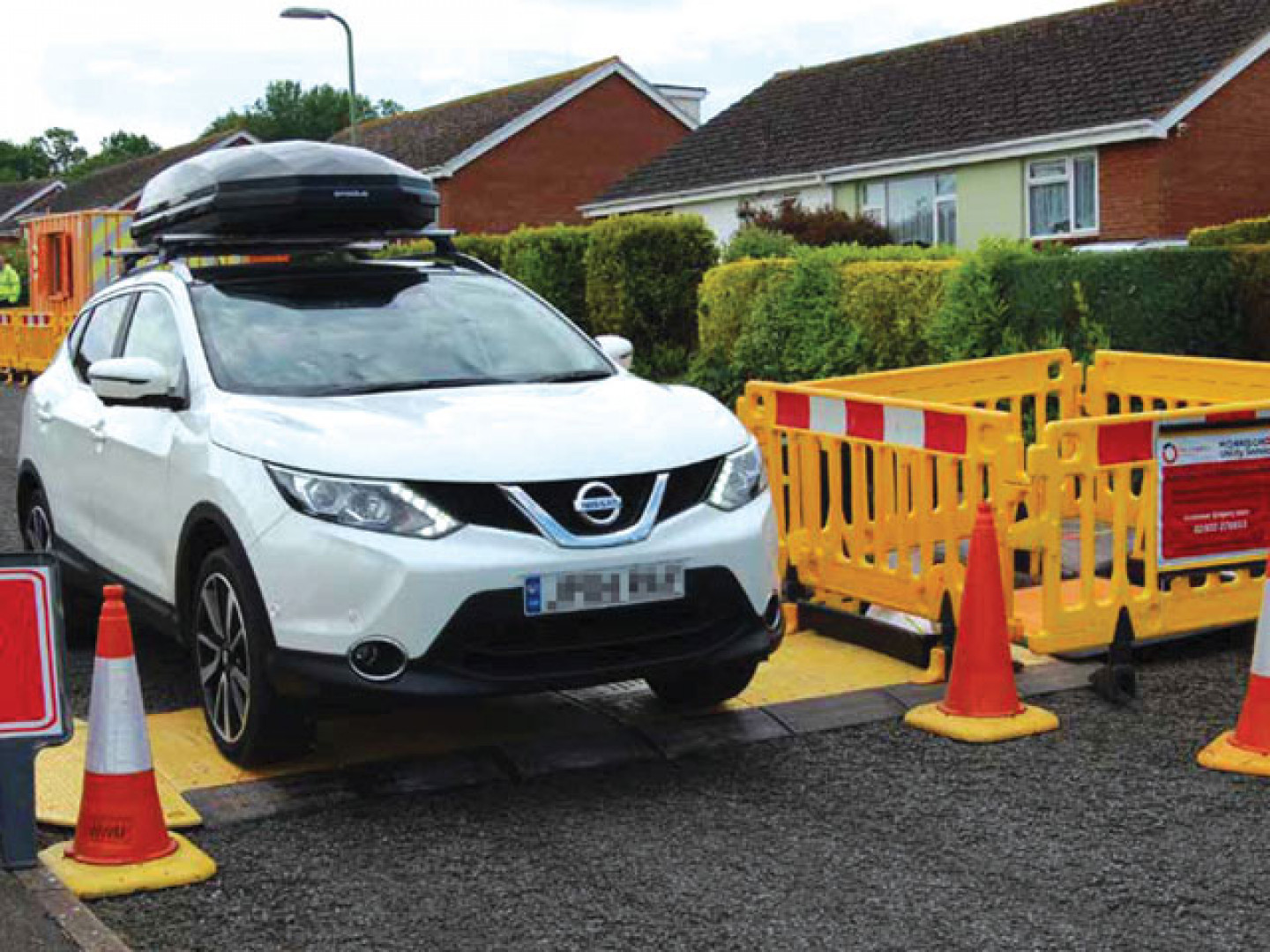What are road plates?
Road plates provide a protective cover to aid pedestrian and vehicle access and protect the ground below them, for example, if trenches for new pipes are being dug underground. They are typically used by ground workers, utility companies, building companies, and on construction sites to cover temporary excavations.
Which road plate should I choose?
There are three main types of road plates (or ‘trench covers’ as they are also known). Steel road plates are heavy duty and assist with vehicle traffic flow. Glass Reinforced Plastic (GRP) road plates are more suited as a lightweight cover to allow pedestrian access but can provide access for vehicles (subject to trench width and ground conditions). Anti-skid road plates – as the name suggests – are made from steel that is coated with a high-friction, skid-resistant surface for added safety over road crossings.
Road plates are available in a number of sizes and thicknesses depending on their intended use.
Deciding when to use road plates
British Standard BS 5975:2008+A1:2011 is the main reference for ensuring best practice in the use of road plates during temporary works procedures. Other guidance that may be referred to can be found in The Construction (Design and Management) Regulations and the Construction Plant-hire Association documentation. Time is also an important consideration in deciding if road plates will be used. Installing and removing them from site will increase the overall site occupation time so this should be balanced against the benefits of enabling traffic flow.
Are road plates easy to handle and install?
Due to their weight, steel road plates and anti-skid road plates need to be moved or repositioned by machine i.e. using a tele handler or a forklift. They should be securely fastened to the road surface or recess, depending on how they are being mounted, using the anchorage points at each corner. The installation of ramps, handrails are guard rails should also be considered when road plates are being installed at events or in public areas, to provide additional safety measures.
GRP road plates can be moved by hand as, despite being strong, they are extremely lightweight. They can also be interconnected to cover any length of trench and to provide extra stability. When road plates are linked together – and bolted for added security – it is less likely they will be vandalised or stolen.
How should road plates be stored?
All road plates should be carefully stacked and stored when not in use to ensure they remain fit and safe for purpose. Like all site safety and security equipment, road plates should be regularly checked for any damage or defects and kept in a secure area to safeguard them for future use.
Extra care should be taken when transporting steel road plates to prevent movement and protect their edges, which can become damaged if they are not securely fastened during transit.
Other safety considerations when using road plates
As well as safe four-wheel vehicle and pedestrian accessibility, cyclists and motorcyclists may also travel over road plates. This is where anti-skid road plates, with an even surface, can provide safe passage. Further consideration should be given to any opening and gaps between road plates, which can create a hazard, particularly for two-wheeled vehicles.
Minimising noise
Road plates can create noise when vehicles cross them. This can be minimised by preventing rocking, ensuring they are securely fastened, and by using the correct size and thickness of road plate to withstand the weight of the traffic that will be passing over them. Road plates that have been recessed are less likely to generate noise so may be the preferred solution in residential areas or in other areas where noise restrictions apply.
Risk assessments for road plates
Before any road plate is installed a comprehensive site risk assessment should first be conducted. Once the correct road plate has been specified and installed regular site inspections should be carried out, in line with manufacturers’ recommendations, to ensure the road plates can safely accommodate the level of traffic passing over them. If any damage is identified that cannot be repaired a replacement road plate should be installed.
Can road plates be customised?
Road plates can be customised by welding company identification badges onto them or by spray-painting a company logo onto the surface. A range of protective paint finishes and colours are available to create a bespoke-branded road plate.
Click here to find out more about selecting the correct road plate for your project.


